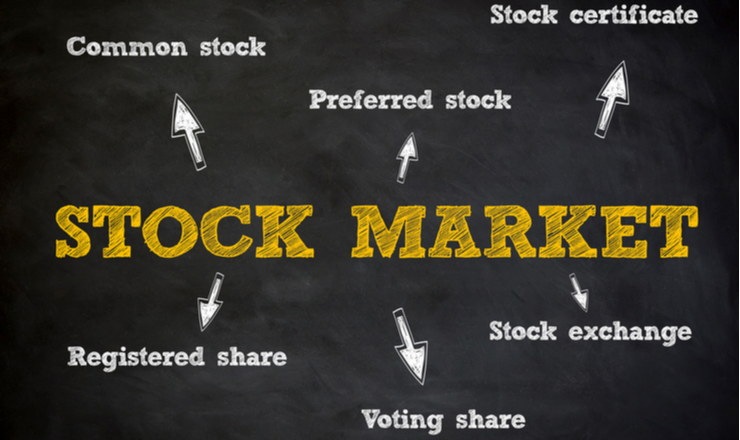
What is the difference between preferred stock and common stock? Does preferred mean that preferred stock is better than common stock? We explain some of the differences between preferred stock and common stock below.
While most investors are familiar with common stock, many are not familiar with preferred stock and how preferred stock differs from common stock.
Preferreds have been around for many years though. Preferred stock got its start with the railroads in the 1800s. Preferred stocks aren’t as popular or issued by as many firms as they once were, but the size of the preferred stock market in the United States is in the hundreds of billions.
Warren Buffett Buys Preferreds
One investor who has used preferred stocks for his gain in recent years is Warren Buffett.
In early 2019, Buffett backed Occidental Petroleum to the tune of $10 billion when they bid for Anadarko Petroleum. Buffett did this by purchasing 100,000 shares of preferred stock. The 100,000 shares of preferred stock pay out an annual dividend of 8%.
Unfortunately, like many of Buffett’s preferred stock investments, this was a deal only available to him.
Understanding the difference between a preferred stock and a common stock can prepare you to take advantage of opportunities in preferreds should they arise.
Preferred Stock vs. Common Stock
Preferred stock and the various versions of today’s preferreds including baby bonds and trust preferred securities are closer to bonds than stocks.
Voting Rights
There are many differences between preferred stock and common stock. Starting first with ownership rights, in the U.S., preferred stock shareholders have no voting rights.
Common shareholders most often do have voting rights. Each share owned provides the right to one vote. The more common shares an investor owns the more votes he gets.
Share of Profits
Most preferred stocks pay a fixed dividend that does not increase as a company gets larger or more successful. The better a company does, the more secure your preferred dividend will become, but the dividend will never change. As a result, the prices of preferred stocks fluctuate much more with interest rates than with the profits of the firm.
Each share of common stock is entitled to a pro-rata share of the profits of the firm. Common stock lets investors share in a company’s success. Common shares give you a claim on the company’s profit in the form of dividend payments. Common shareholders get the best return when a company is growing and gaining profit.
But common shareholders are the last in line when a company takes a turn for the worse and bankruptcy occurs. As a common shareholder, you’ll have one of the lowest rungs on the ladder as secured creditors, unsecured creditors, and preferred stockholders get paid before you do.
Different Features of Preferred Stock
There are many things to take into account when considering a preferred stock for investment. Unlike common stocks, preferred stocks tend to have different features. Preferreds from the same issuer can even differ. Below we cover four different features of preferred stocks
- Cumulative
- Callable
- Adjustable-rate
- Convertible
Cumulative Preferred Stock
If a company suspends the dividend on its preferred stock, a cumulative preferred requires the company to pay all back-dividends when it resumes its dividend. Preferred stockholders must be paid all back-dividends before the company can resume paying common stock dividends. With non-cumulative preferred stocks, when a company suspends its dividend and then decides to resume it, shareholders are not entitled to back-dividends. When possible, cumulative preferred stocks should be favored over non-cumulative preferred stocks.
Callable Preferred Stock
Most preferred stocks today are callable. A call feature entitles the issuing company to redeem the preferred at par value at a specified date in the future. Many preferred stocks issued today are callable after five years. The call feature provides companies with an opportunity to refinance at a lower rate if interest rates fall. Call features are a benefit to the issuer and a drawback for the investor. If you are considering a preferred stock that seems to offer an attractive yield, be sure to check the call-date. A high interest rate preferred past its call-date is likely to be redeemed.
Adjustable-Rate Preferred Stock
Adjustable-rate preferred stocks pay coupons that fluctuate based on a specified benchmark. Often the benchmark is a short-term interest rate such as Treasury bills. Adjustable-rate preferreds pay an interest rate that is, say, three percentage points above the Treasury bill rate. It’s this flexibility with preferred prices that make it sometimes more stable and lucrative than fixed-rate preferred stock.
Convertible Preferred Stock
Some preferreds are convertible into common stock. Convertibles entitle and sometimes mandate shareholders to convert their shares of preferred stock in a company into shares of common stock. Convertibles are often issued by newer businesses or those with significant capital needs. Convertibles often come with lower interest rates because they provide investors with more upside than non-convertible preferred stocks.
There are some benefits to investing in preferred stocks, but also many drawbacks that should be understood that are beyond the scope of this post. We’ve only scratched the surface to provide you with a general understanding of preferreds.
Below is a list of some of the largest publicly traded preferred stocks including the current yield, the yield to call, the issue size, and the first call-date. You will notice that most of the firms on the list are financial companies which is one of the drawbacks of trying to craft a portfolio of preferred stocks.
Preferred Stock List

If you are interested in learning more about how Young Research’s favored income investments can be used to craft a well-diversified portfolio, visit Richard C. Young & Co., Ltd.
